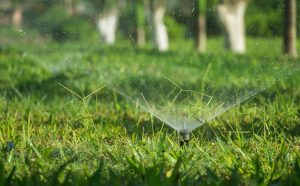How to Design a Landscape That Attracts Birds and Pollinators
If you’ve ever watched a hummingbird hover near a blossom or heard a finch singing from your backyard, you know how magical it can be to share your space with wildlife. In Montana, where natural beauty is abundant, creating a bird- and pollinator-friendly yard is not only possible—it’s rewarding and environmentally beneficial. At Horizon Landscape & Irrigation, we believe smart landscaping can help support local ecosystems while making your property more vibrant, healthy, and alive.
Here’s how to transform your yard into a haven for bees, butterflies, hummingbirds, and songbirds.
1. Choose Native Plants First
Montana’s native plants are perfectly suited for local wildlife and weather patterns. Species such as purple coneflower, blanket flower, bee balm, and golden currant are magnets for pollinators and birds alike. These plants require less water, are more resilient to local pests, and bloom in cycles that provide food throughout the growing season.
Birds are especially attracted to plants that produce berries and seeds—chokecherry, serviceberry, and elderberry are local favorites that feed wildlife while adding beauty to your yard.
2. Plan for Continuous Bloom
One of the best ways to attract pollinators like bees and butterflies is to offer a steady source of nectar throughout the season. Try planting in layers: early bloomers (like crocus or pasque flower), mid-season showstoppers (such as lupine and coreopsis), and late bloomers (like goldenrod and aster). This approach ensures that wildlife will have something to forage from spring through fall.
3. Go Organic and Avoid Chemicals
Pesticides and herbicides can be harmful—or even fatal—to the very creatures you want to attract. Opt for organic practices and hand-weeding when possible. Healthy soil, composting, and mulching all support plant growth naturally while protecting beneficial insects.
4. Add Water Features
Birds and pollinators need water just as much as food. A small birdbath, bubbling rock, or shallow dish with stones (for bees and butterflies to land on) can make a huge difference. Keep the water fresh and clean, especially during hot summer days.
5. Provide Shelter and Nesting Spaces
Dense shrubs, ornamental grasses, and small trees can give birds places to rest and nest. Consider installing birdhouses designed for local species like wrens, chickadees, and bluebirds. Even leaving small brush piles or dead tree snags in tucked-away corners of your yard can provide valuable habitat.
6. Use Clumping Plants and Groupings
Pollinators are more likely to find and return to plants that are grouped in clusters rather than scattered randomly. Try planting three to five of each flower variety together to create strong visual signals and efficient foraging paths for bees and butterflies.
7. Create a Quiet, Low-Disturbance Zone
Birds and pollinators thrive in p
eaceful environments. Limit activity near nesting areas and avoid pruning during peak breeding or migration seasons. Let fallen leaves stay in place during late fall—they offer critical overwintering shelter for beneficial insects.
A Yard That’s Alive and Thriving
Designing your landscape to support birds and pollinators is about more than just aesthetics. It’s an investment in biodiversity, environmental stewardship, and creating a vibrant, welcoming outdoor space. At Horizon Landscape & Irrigation, we specialize in Montana-friendly design that combines beauty with ecological function. Whether you want a full yard redesign or a few key additions, we’re here to help bring your vision—and your garden—to life.
Visit https://horizonlandscapemt.com to learn more or schedule a free consultation today.
Read Next: Landscaping with Native Plants: Why Going Local Pays Off in Montana




